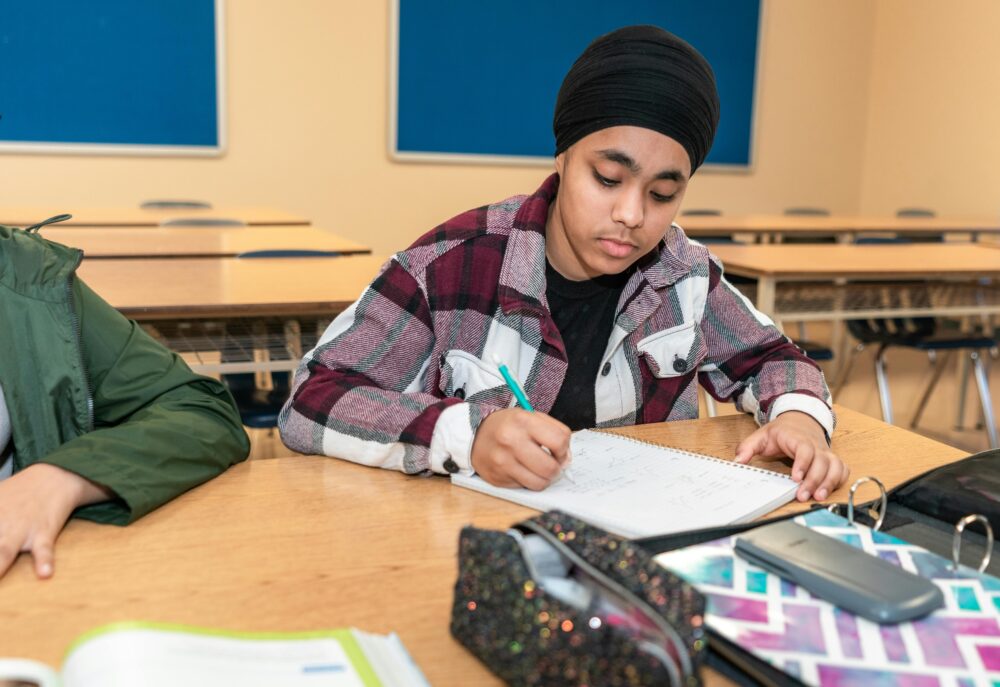So Many Schools, So Few Options: How Mayor Bloomberg’s Small High School Reforms Deny Full Access to English Language Learners
This joint report by AFC and the New York Immigration Coalition uses enrollment data from the New York City Department of Education to examine the representation of English Language Learners (ELLs) and immigrant students in both small and large schools, as well as the extent to which small high schools have not been created in areas with large and growing immigrant student populations.

Replacing large underperforming high schools with new smaller schools is one of Mayor Michael Bloomberg’s and New York City Schools Chancellor Joel Klein’s most important education reforms. Initial data from small schools show improved outcomes for all students, including English language learners, or ELLs. Yet, when it comes to ELLs, they have not been provided full access to these effective small high schools, according to a report released today by The New York Immigration Coalition, Advocates for Children of New York, and seven immigrant community groups.
“We don’t have ELL students. They can apply, but we can’t serve them. Eventually we will have services for them, but we just don’t have the people to do it right now. If the students are accepted, we end up transferring them,” according to a small schools official cited in the report. Although this distribution of ELLs in small schools appears, on its face, to match the percentage of ELLs across all schools, many ELLs are clustered in particular schools and do not have access to the majority of small schools. Apparently, the Department of Education’s policy is to allow small schools two years before they are required to serve ELLs. For example, in 2005-2006, out of 183 schools analyzed in the report, more than half (93) had zero to less than five percent ELLs in their student body.
“We know that smaller schools – when developed properly and with sufficient resources – improve student outcomes, particularly for ELL students. Yet, our report finds that the vast majority of small schools created under Mayor Bloomberg’s high school reform effort do not provide legally mandated programs for ELLs,” said Chung-Wha Hong, executive director of The New York Immigration Coalition. “More than half of ELL students drop out of high school and are concentrated in some of the City’s most overcrowded and underperforming schools. Mayor Bloomberg and Chancellor Klein must do more to end the de facto exclusion of immigrant and limited-English students from the majority of small schools, and give them a better education in both large and small schools,” said Hong.
“While we support the New York City Department of Education’s high school reform efforts in general, we cannot condone the fact that ELLs do not have equal access to a quality high school education in many of the small schools,” said Elisa Hyman, executive director of Advocates for Children of New York. “ELLs should have the same right to high school choice as their English-proficient classmates.”
Just as troubling was the finding that even when small schools do have ELL students, many were not providing the legally required programs to help immigrant students learn English and other subjects. Fifty-two of the 126 schools surveyed (41 percent) reported that they offered no language programs for ELL students. “Now that we are in our third year, we have to accept [ELLs], but we are still trying to find a teacher for them,” stated a small schools administrator, according to the report.
The report also reveals that very few small schools have been created in the boroughs where the largest numbers of ELL and immigrant students reside. While Queens had 11,000 ELL students (approximately 30 percent of all high school ELLs), it only had 7 percent of new small schools in 2005.
“Parents from the Russian community are very disillusioned with small schools, not because they think the schools are ineffective, but because they don’t provide services for our children or in our neighborhoods,” said Vladimir Epshteyn, executive director of the Metropolitan Russian American Parents Association. “Even though they are now almost 200 small high schools, they are located too far away from our homes, or they don’t have the services to help our children learn English. And sometimes, immigrant parents don’t even know about the small schools option, because so little information about the high school admissions process finds its way into our community.”
Gloria Mejia, a member of Make the Road by Walking and a parent of three sons attending three different high schools in Brooklyn, agreed. “When I was looking for a school for my sons, it was hard to find a school that had both the space for them and a program to help them learn English,” explained Mejia. “With my first two sons, I didn’t even know that they had the option of going to a small school. My son Jose Angel studied computers in Honduras, but I didn’t know he could go to a school specializing in computers,” said Mejia.
Immigrant groups are calling on Mayor Bloomberg and New York City Schools Chancellor Klein to increase access and enrollment of ELL and immigrant students in small schools, by eliminating the Department of Education’s policy of allowing small schools to turn away ELL applicants in their first two years of operation, and by requiring all small schools to show evidence that ELLs will have meaningful access to their services by the beginning of the next school year. They also are urging the City to increase the number of small schools and outreach efforts in immigrant communities.
The report was issued by The New York Immigration Coalition and Advocates for Children, along with Chhaya Community Development Corporation, Chinese Progressive Association, Chinese-American Planning Council, Council of Peoples Organization, Haitian Americans United for Progress, Make the Road by Walking, and the Metropolitan Russian American Parents Association. The findings are based on surveys of more than 1,150 parents and students, a dozen focus groups with more than 100 parents and students from immigrant families, and surveys of senior staff in more than 126 schools.
-
November 28, 2006


